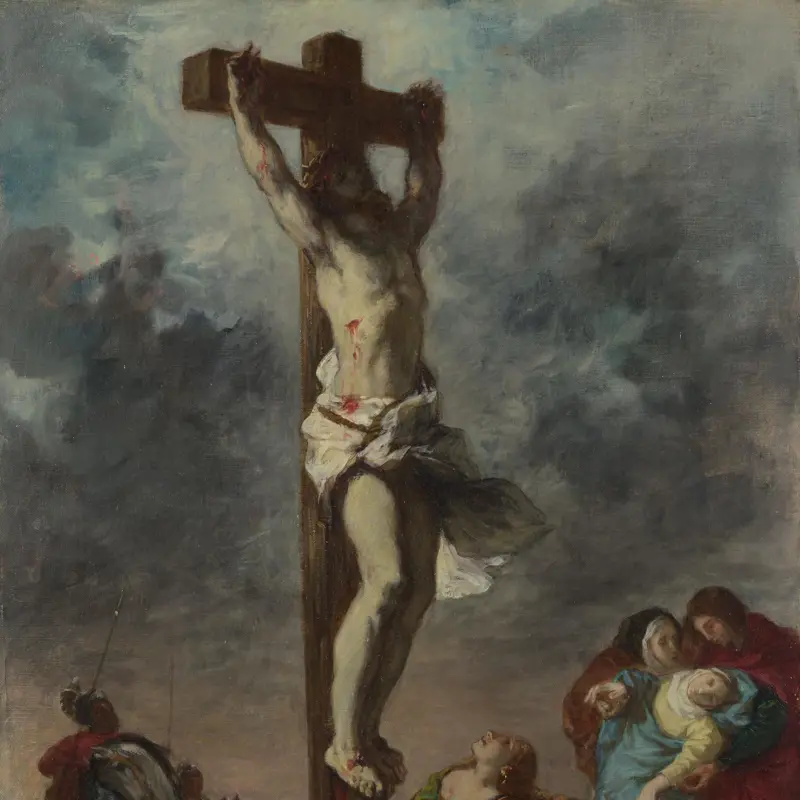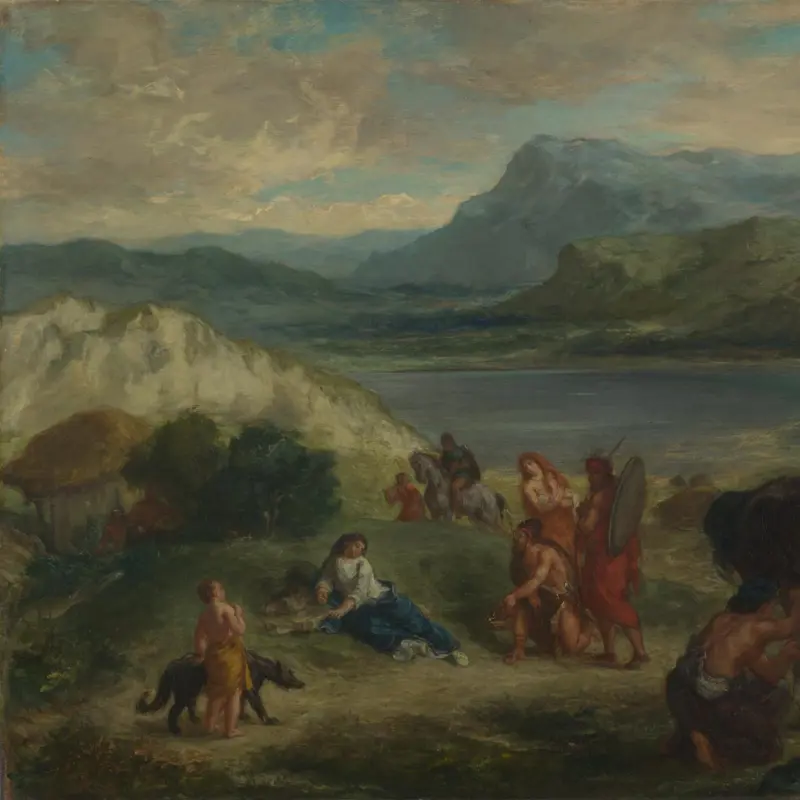Eugène Delacroix, 'Abel Widmer', about 1824
About the work
Overview
This lively and engaging portrait shows Abel Widmer (1805–1838), a pupil at the Institution Saint-Victor, a secondary school for boys in Paris. It was probably painted around 1824, the year Widmer won the school’s annual prize. It is most likely the first of a series of ten portraits of the prizewinners commissioned by the school’s founder and friend of Delacroix, Prosper-Parfait Goubaux (1795–1859). Six of the portraits are known to survive. Delacroix was a young man in his mid-twenties when he painted the portrait, and he was still forging his own style, looking at Old Masters such as Velázquez for inspiration. Degas so admired the portrait that he acquired it in the 1890s for his own collection.
Key facts
Details
- Full title
- Abel Widmer
- Artist
- Eugène Delacroix
- Artist dates
- 1798 - 1863
- Date made
- about 1824
- Medium and support
- oil on canvas
- Dimensions
- 59.7 × 48.3 cm
- Acquisition credit
- Bought, 1918
- Inventory number
- NG3287
- Location
- Not on display
- Collection
- Main Collection
Provenance
Additional information
Text extracted from the ‘Provenance’ section of the catalogue entry in Martin Davies, with additions and some revisions by Cecil Gould, ‘National Gallery Catalogues: French School: Early 19th Century, Impressionists, Post-Impressionists, etc.’, London 1970 and supplemented by Isobel Muir; for further information, see the full catalogue entry.
Exhibition history
-
2016Painters' Paintings: From Freud to Van DyckThe National Gallery (London)23 June 2016 - 4 September 2016
Bibliography
-
1885A. Robaut and E. Chesneau, L'oeuvre complet d'eugène Delacroix, Paris 1885
-
1918Galerie Georges Petit, Catalogue des tableaux modernes et anciens, aquarelles, pastels, dessins, par Bartholomé … composant la collection de Edgar Degas, Paris, 26 March 1918 - 27 March 1918
-
1957Martin Davies, National Gallery Catalogues: French School, 2nd edn (revised), London 1957
-
1960D. Halévey , Degas Parle: My Friend Degas, Paris 1960
-
1970Davies, Martin, and Cecil Gould, National Gallery Catalogues: French School: Early 19th Century, Impressionists, Post-Impressionists etc., London 1970
-
1981L. Johnson, The Paintings of Eugène Delacroix: A Critical Catalogue, 6 vols, Oxford 1981
-
1989D. Sutton, 'The Degas Sales and England', The Burlington Magazine, CXXXI/1033, 1989, pp. 266-72
-
1996A. Dumas, Degas as a Collector, London 1996
-
1997A. Dumas et al., The Private Collection of Edgar Degas (exh. cat. Metropolitan Museum of Art, 1 October 1997 - 11 January 1998), New York 1997
-
2001
C. Baker and T. Henry, The National Gallery: Complete Illustrated Catalogue, London 2001
About this record
If you know more about this work or have spotted an error, please contact us. Please note that exhibition histories are listed from 2009 onwards. Bibliographies may not be complete; more comprehensive information is available in the National Gallery Library.



